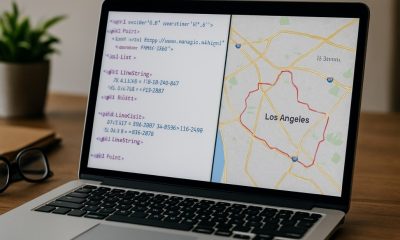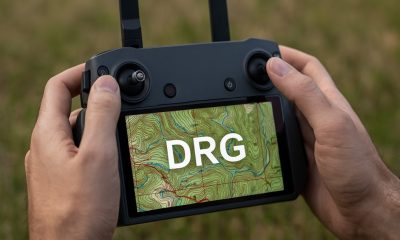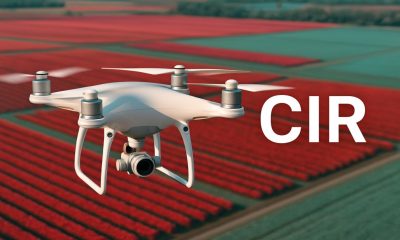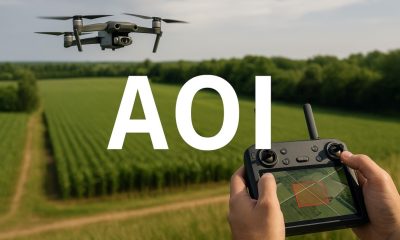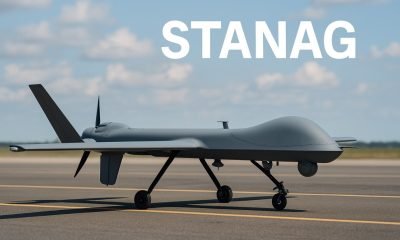- Acronym Guide
- AAM
- ABS
- AC
- ACAS
- ADS-B
- AFAC
- AGL
- AI
- AIM
- ALS
- AM
- AMA
- ANSP
- AOI
- APPI
- AUV
- AUVSI
- ARPAS-UK
- ASTM
- ATC
- BVLOS
- CAA
- CAAC
- CAB
- CASA
- CATT
- CBO
- CBR
- CBRN
- CDMA
- CDR
- CFR
- CIR
- COA
- COMINT
- CORS
- COTP
- COTR
- CPTED
- CV
- C2
- DAA
- DEM
- DFI
- DFS
- DGCA
- DHS
- DOD
- DPA
- DPEs
- DRG
- DRO
- DSM
- DSMX
- DSP
- DSSS
- DTM
- EASA
- EFT
- EO
- EOD
- EO/IR
- ELINT
- EMI
- ESC
- EVLOS
- eVTOLs
- FAA
- FCC
- FCS
- FHSS
- FICCI
- FLIR
- FOB
- FOV
- FPS
- FPV
- GBDAA
- GCP
- GCS
- GDPR
- GML
- GNSS
- GPS
- GSD
- GVC
- HDR
- HOGE
- IACRA
- ICAO
- ICS
- IMU
- INS
- IR
- ISA
- ISR
- ITU
- JARUS
- LAAMS
- LAANC
- LAATM
- LAI
- LBA
- LIDAR
- LOS
- LSALT
- MAC
- MAVLink
- MLIT
- MMS
- MSL
- MTOM
- NDAA
- NCSL
- NFZ
- NIST
- NMEA
- NOTAM
- NPA
- NPRM
- NTIA
- OBIA
- OEM
- OFDM
- OOP
- PASM
- PAV
- PCV
- PdM
- PEC
- PIC
- PID
- PIPL
- PLD
- PM
- PN
- PPK
- PPS
- PSM
- PWM
- UAM
- UAOP
- UAS
- UASTM
- UAV
- UCAVs
- UHD
- UHF
- USV
- UTM
- RAIM
- RCC
- RCS
- RFI
- ReOC
- RePL
- RMS
- ROI
- RPAS
- RPC
- RTH
- RTK
- SaR
- SAR
- SARP
- SBAS
- S.Bus
- SBIR
- SEDENA
- SfM
- SFOC
- SIGINT
- SLAM
- SMS
- SORA
- STANAG
- STTR
- sUAS
- TCAS
- TCCA
- TFR
- TIN
- TOF
- TP
- TPS
- TSA
- VHF
- VLOS
- VTOL
Drone Acronyms
What is TSA (Transportation Security Administration) Drone Policy?
By
Jacob StonerTable Of Contents

Definition
TSA stands for Transportation Security Administration. It is an agency of the U.S. Department of Homeland Security responsible for ensuring the security of the traveling public within the United States. TSA oversees the security of the nation’s transportation systems, including aviation, rail, and public transit.
TSA’s Drone Policy
The Transportation Security Administration (TSA) plays a crucial role in regulating and enforcing policies that ensure the security of the United States’ airspace. With the increasing use of drones, the TSA has developed comprehensive guidelines to manage and mitigate potential security risks associated with unmanned aircraft systems (UAS). Here, we delve into the key components of the TSA’s drone policy:
Overview
The TSA’s drone policy is designed to safeguard national security while accommodating the growing use of drones for commercial, recreational, and governmental purposes. This policy outlines the responsibilities of drone operators, the requirements for drone operation near sensitive areas, and the enforcement mechanisms in place to ensure compliance.
Key Components
- Registration and Identification
- All drone operators must register their drones with the Federal Aviation Administration (FAA) and ensure that their drones display unique identification numbers. This registration process helps in tracking and managing drones operating within the national airspace.
- Operational Restrictions
- The TSA imposes strict no-fly zones around critical infrastructure, including airports, military bases, and national landmarks. Drones are prohibited from flying within these restricted areas to prevent any potential security breaches.
- Security Screening
- Drones and their operators may be subject to security screening by TSA personnel. This includes checks on the drone’s equipment, payload, and the operator’s credentials to ensure that they do not pose a threat to national security.
- Remote Identification
- To enhance situational awareness and security, the TSA requires drones to have remote identification capabilities. This allows authorities to monitor and identify drones in real-time, ensuring that they are operating within legal parameters.
- Emergency Response Protocols
- The TSA has established emergency response protocols for incidents involving drones. This includes coordination with law enforcement agencies, the FAA, and other relevant entities to address and neutralize potential threats posed by rogue or unauthorized drone operations.
Compliance and Enforcement
Non-compliance with the TSA’s drone policy can result in significant penalties, including fines and legal action. The TSA collaborates with other federal agencies to enforce these regulations and maintain the security of the airspace. Operators found violating these policies may face stringent consequences, ensuring a strong deterrent against illegal drone activities.
Educational Initiatives
The TSA actively promotes educational initiatives to inform drone operators about the importance of adhering to security guidelines. Through workshops, online resources, and public awareness campaigns, the TSA aims to foster a culture of compliance and safety within the drone community.
Relevance to the Industry
The TSA plays a critical role in the drone industry by developing and enforcing security measures that protect against potential threats. This includes establishing guidelines for drone operations near critical infrastructure and high-security areas, as well as collaborating with other agencies to monitor and respond to security incidents involving drones.
How Does the Transportation Security Administration (TSA) Work?
The Transportation Security Administration (TSA) is a U.S. government agency responsible for ensuring the security of travelers and the transportation system. Established in response to the September 11, 2001, terrorist attacks, the TSA focuses on protecting the nation’s transportation networks, primarily in aviation, but also in other modes of transportation. Here’s a detailed explanation of how the TSA works:
1. Purpose and Importance
- Security: TSA’s primary mission is to prevent terrorist attacks and ensure the safety of passengers and cargo in the transportation system.
- Regulatory Compliance: Ensures compliance with federal security regulations and standards across various transportation modes.
- Efficiency: Strives to balance security measures with the efficient flow of passengers and goods.
2. Key Components of TSA
- Screening Operations: TSA oversees the screening of passengers, baggage, and cargo at airports to prevent prohibited items and potential threats from being brought on board.
- Federal Air Marshal Service (FAMS): Deploys undercover air marshals on flights to provide security and prevent in-flight incidents.
- Intelligence and Analysis: Gathers and analyzes intelligence to identify and mitigate potential security threats.
- Regulatory Compliance: Develops and enforces security regulations and standards for transportation entities, including airlines, airports, and surface transportation operators.
- Security Training and Certification: Provides training and certification programs for TSA personnel and transportation industry workers to ensure adherence to security protocols.
3. How TSA Works
- Passenger Screening:
- Pre-Screening: TSA uses the Secure Flight program to pre-screen passengers against government watchlists. Passengers provide their information when booking flights, which is then cross-checked against these lists.
- Checkpoint Screening: At airport security checkpoints, passengers and their carry-on items are screened using a combination of technology and physical inspections. This includes metal detectors, X-ray machines, body scanners, and physical pat-downs.
- TSA PreCheck: A trusted traveler program that allows pre-approved passengers to use expedited screening lanes, reducing wait times and simplifying the screening process.
- Baggage Screening:
- Checked Baggage: TSA screens all checked baggage using Explosive Detection Systems (EDS) and Explosive Trace Detection (ETD) technology to detect potential threats.
- Carry-On Baggage: Carry-on items are screened at security checkpoints using X-ray machines and may be subject to additional inspection if deemed necessary.
- Cargo Screening: TSA oversees the screening of air cargo to ensure it does not contain prohibited items or threats. This includes using technology, canine teams, and physical inspections.
- Federal Air Marshal Service (FAMS): Air marshals operate undercover on selected flights to detect, deter, and respond to in-flight threats. They are trained in law enforcement and counterterrorism tactics.
- Intelligence and Threat Analysis:
- Data Collection and Analysis: TSA collects and analyzes data from various sources, including passenger information, travel patterns, and intelligence reports, to identify potential security threats.
- Collaboration with Other Agencies: TSA collaborates with other federal, state, and local agencies, as well as international partners, to share intelligence and coordinate security efforts.
- Regulatory Compliance and Oversight:
- Security Regulations: TSA develops security regulations and guidelines for airlines, airports, and other transportation entities to follow.
- Inspections and Audits: Conducts regular inspections, audits, and assessments to ensure compliance with security standards and regulations.
- Enforcement Actions: TSA has the authority to take enforcement actions, such as fines and penalties, against entities that fail to comply with security regulations.
- Security Training and Certification:
- TSA Workforce Training: Provides comprehensive training programs for TSA officers, including initial training, recurrent training, and specialized training for different roles.
- Industry Training: Offers training and certification programs for transportation industry workers, such as airline staff, airport personnel, and surface transportation operators, to ensure they understand and follow security protocols.
4. Applications and Use Cases
- Airport Security: TSA’s primary focus is on securing airports and preventing threats from entering the aviation system. This includes passenger and baggage screening, airport security infrastructure, and coordination with airport authorities.
- Surface Transportation: TSA also works to secure other modes of transportation, including rail, buses, and mass transit systems, by developing security standards and conducting inspections.
- Cargo Security: Ensures the safety of air cargo through screening and regulatory oversight, preventing dangerous items from being transported by air.
- In-Flight Security: FAMS provide in-flight security on selected flights, protecting passengers and crew from potential threats.
- Regulatory Compliance and Oversight: TSA’s regulations and oversight ensure that transportation entities adhere to security standards, enhancing overall transportation security.
5. Advantages and Challenges
- Advantages:
- Enhanced Security: TSA’s comprehensive screening and security measures significantly reduce the risk of terrorist attacks and other threats in the transportation system.
- Public Confidence: TSA’s presence and procedures help build public confidence in the safety of air travel and other transportation modes.
- Regulatory Framework: Provides a clear regulatory framework and standards for transportation security, ensuring consistency and compliance across the industry.
- Challenges:
- Balancing Security and Convenience: Finding the right balance between stringent security measures and minimizing inconvenience to passengers can be challenging.
- Resource Allocation: Ensuring adequate resources and staffing to maintain high security standards across all transportation modes.
- Evolving Threats: Staying ahead of evolving security threats and adapting to new technologies and tactics used by adversaries.
- Public Perception: Addressing public concerns about privacy and the perceived inconvenience of security procedures.
6. Technological Advances
- Advanced Screening Technologies: TSA continuously adopts new screening technologies, such as advanced imaging technology (AIT) and computed tomography (CT) scanners, to enhance detection capabilities and efficiency.
- Biometric Identification: Implementing biometric identification systems, such as facial recognition and fingerprint scanning, to streamline the passenger screening process and enhance security.
- Data Analytics and AI: Leveraging data analytics and artificial intelligence to improve threat detection, risk assessment, and resource allocation.
- Remote Screening: Developing remote screening capabilities to enhance flexibility and efficiency in security operations, especially in response to emerging threats and changing travel patterns.
Understanding how the Transportation Security Administration (TSA) works highlights its critical role in ensuring the safety and security of the nation’s transportation system. Through comprehensive screening processes, regulatory oversight, intelligence analysis, and technological advancements, TSA aims to protect passengers, cargo, and transportation infrastructure from potential threats, while balancing security measures with efficiency and public convenience.
Example in Use
“The TSA issued new guidelines for drone operations near airports to enhance security and prevent potential threats.”
Frequently Asked Questions about TSA (Transportation Security Administration)
1. What is the role of the TSA in drone security?
Answer: The role of the TSA in drone security includes:
- Setting Guidelines: Developing and enforcing security protocols for the safe operation of drones, especially near sensitive areas such as airports and government buildings.
- Monitoring Threats: Collaborating with other agencies to monitor drone activity and respond to potential security threats.
- Public Awareness: Educating the public and drone operators about safe and secure drone practices.
- Incident Response: Coordinating with law enforcement and other agencies to respond to security incidents involving drones.
2. How does the TSA collaborate with other agencies on drone security?
Answer: The TSA collaborates with other agencies on drone security by:
- Sharing Information: Exchanging data and intelligence on drone threats and security incidents with federal, state, and local law enforcement agencies.
- Developing Joint Protocols: Working with agencies like the FAA and DHS to create comprehensive security guidelines and response plans.
- Coordinating Responses: Partnering with law enforcement and emergency response teams to handle security incidents involving drones.
- Conducting Training: Providing training and resources to other agencies and stakeholders on drone security measures and protocols.
3. What measures has the TSA implemented to enhance drone security?
Answer: Measures implemented by the TSA to enhance drone security include:
- Restricted Areas: Establishing no-fly zones and restricted areas around critical infrastructure and high-security locations.
- Security Guidelines: Issuing guidelines and best practices for drone operators to ensure safe and secure operations.
- Detection Systems: Implementing drone detection and countermeasure systems at airports and other sensitive sites.
- Public Education: Launching awareness campaigns to inform the public and drone operators about the importance of security in drone operations.
For examples of these acronyms visit our Industries page.
As the CEO of Flyeye.io, Jacob Stoner spearheads the company's operations with his extensive expertise in the drone industry. He is a licensed commercial drone operator in Canada, where he frequently conducts drone inspections. Jacob is a highly respected figure within his local drone community, where he indulges his passion for videography during his leisure time. Above all, Jacob's keen interest lies in the potential societal impact of drone technology advancements.


